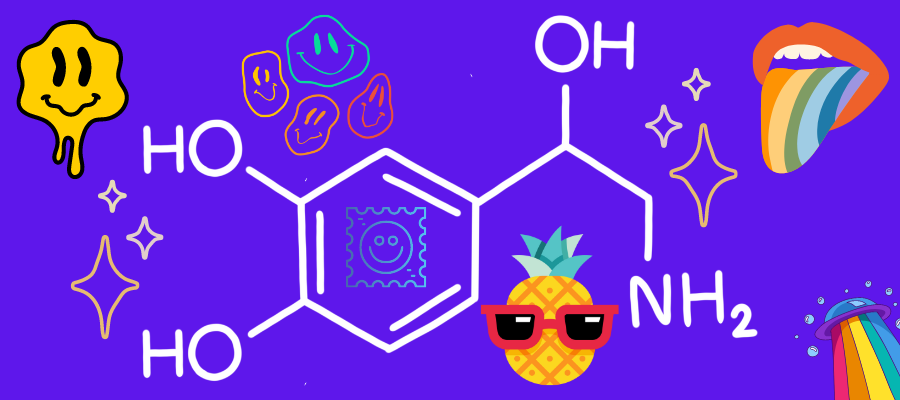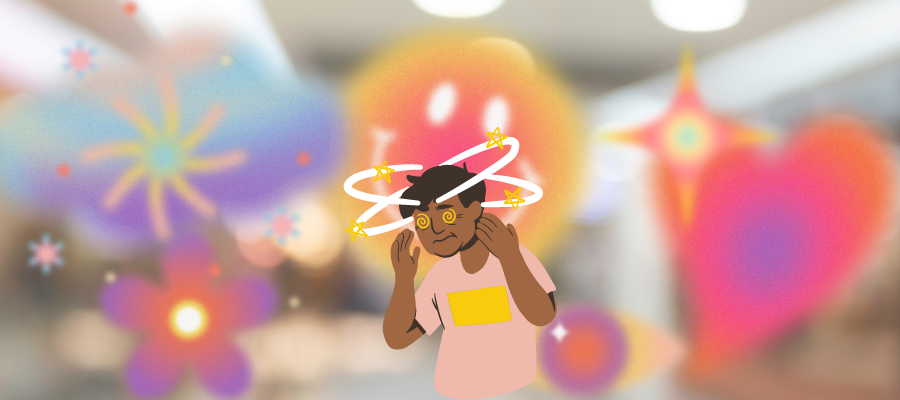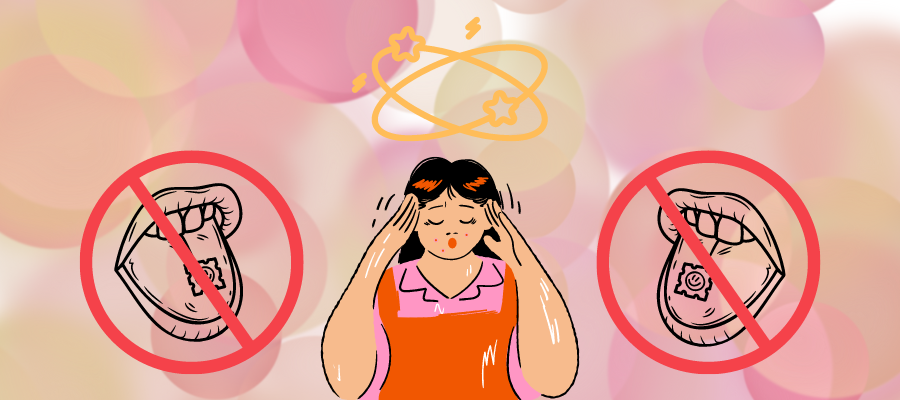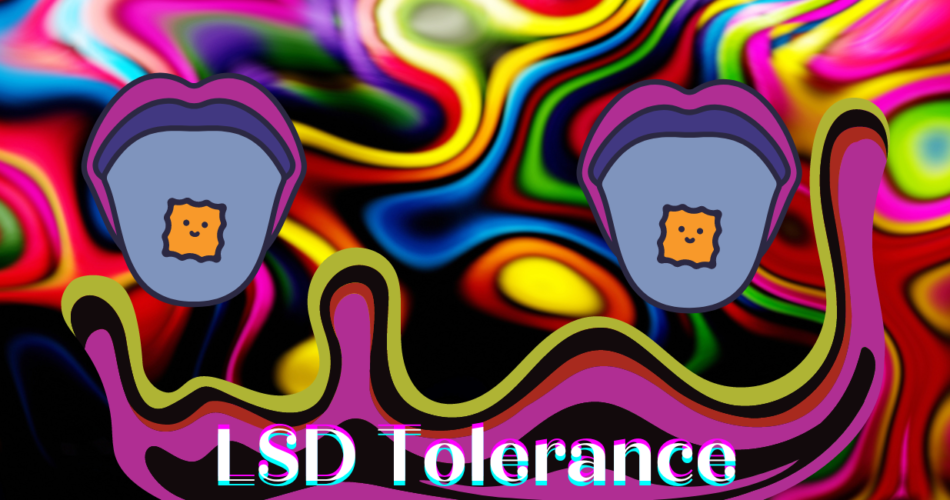As with most things in life, there is a dark side to LSD. While it can be an incredibly enlightening experience, it can also lead to abuse. So, when does LSD tolerance develop? And how can you prevent it from happening? Read on to find out.
LSD (lysergic acid diethylamide) is a hallucinogen that comes in a variety of forms. There is the classic blotter paper, liquid, and sugar cubes. It can also come in gelatin sheets and gummy bears. The effects of LSD may vary from person to person, but one thing all users may experience is LSD tolerance. Sadly, it also depends on individual aspects, but it highly impacts the doses of LSD one is taking.
LSD Tolerance TL;DR
- LSD tolerance is the body and mind tolerance one develops due to increased amount of the substance. In other words: you become more resistant to the LSD effects ✔️
- Some people develop tolerance after a few days of systemic use ✔️
- Since LSD is not addictive, one can “drop” the tolerance after a week long break from the substance ✔️
- Increased LSD tolerance can lead to substance abuse ⚠️
What Is LSD Tolerance?

LSD tolerance is the phenomenon wherein repeated administration of LSD leads to a decrease in the intensity of its effects. 5-HT2A serotonin receptors are believed to be responsible for the psychedelic effects of LSD. 5-HT2A receptor density is reduced in the brains of tolerant individuals, which may explain why LSD’s effects are weakened with continued use.
Typically, LSD tolerance develops after 3-4 days of daily administration. Cross-tolerance between LSD and other 5-HT2A agonists such as psilocybin, DMT, and DOI has been observed, meaning that those who are tolerant to one of these drugs are likely to be tolerant to the others as well. There is no evidence that LSD tolerance leads to physical dependence or addiction.
How long does LSD tolerance last? Many claim it is reversible and that tolerance disappears quickly after drug use is stopped. However, the higher the tolerance, the longer the use must be ceased for.
Editor’s Note
Just to be clear, it never takes a long time to “drop” the tolerance. For some it’s 2 days, for others 2 weeks, but very rarely it’s more than that. If you enjoy occasional trips, you don’t need to worry about developing tolerance.
What Can Increase Tolerance to LSD?
Users report that after taking the drug repeatedly, they require increasingly higher doses to achieve the same desired effects. Several factors can influence tolerance, including how often someone uses LSD, how much they use, and their individual physiology. Some people may develop a higher tolerance to LSD than others. There is no sure way to prevent tolerance from developing, but people who want to reduce their risk can take breaks from using the drug or lower the doses. Additionally, taking measures to reduce drug use in general may also help reduce tolerance.
Effects of LSD and Increased Tolerance

One of the most difficult aspects of taking LSD is that its effects are highly subjective and can vary greatly from person to person. In general, however, there are a few behavioral effects that can help you determine if the amount of LSD you’re taking is having a weaker effect.
For instance, users may find that they are less able to concentrate or focus on certain tasks. They may also start to see less visual hallucinations, and these may be very faint and fleeting. Additionally, users may develop tolerance to LSD more quickly than usual, meaning that the effects can drastically and rapidly change. In other words, you may already be tolerant to LSD, but the effects will drop later on.
When Does Increased Tolerance Turn Into LSD Abuse?
For many people, LSD is a safe and enjoyable way to experience altered states of consciousness. However, when taken in large doses or used repeatedly over time, LSD can cause serious psychological problems. Although LSD is not considered addictive, and it’s very hard to overdose, the abuse could be dangerous and damaging. Some of the most common LSD abuse symptoms include paranoia, anxiety, insomnia, and delusional thinking. In severe cases, LSD abuse can lead to psychosis, schizophrenia, and death.
LSD use doesn’t make one an addict like other drugs (cocaine, heroin, or ecstasy). Increased LSD tolerance usually turns into abuse, when the doses are extremely high, yet the effects stay weak. In case of micrograms, the extremely high doses cross the threshold of 200 and go even higher.
What Can Happen After You Stop Using the Drug?

If you notice you’ve developed an increased LSD tolerance, maybe it’s time to consider addiction treatment. Some common symptoms of withdrawal from lysergic acid diethylamide include visual flashbacks, depersonalization and a need for a high.
Visual Flashbacks
The most common withdrawal symptom of LSD is called HPPD (Hallucinogen Persisting Perception Disorder). HPPD causes people to experience “visual flashbacks” long after their trip has ended. This means that they may see colors, shapes, or patterns in their everyday life that were present during their acid trip. It’s important to note that these visuals are not usually dangerous, just strange and unexpected.
Depersonalization
Another common withdrawal symptom of LSD is depersonalization. This can cause users to feel disconnected from reality, as if they are living in a dream-like state and can no longer recognize what is real versus what isn’t. Depersonalization can also lead to memory loss and difficulty concentrating on simple tasks. It’s important to understand that these symptoms should pass with time; however, those who experience them should seek help from a medical professional if they become severe or prolonged.
A Need for a High
Finally, some people report feeling an intense “mental need” for another high after coming down from an acid trip. This is commonly referred to as “psychological addiction” – a psychological dependence on a stimulant or hallucinogenic drug rather than an actual physical addiction like with heroin or cocaine use. Although this “mental need” is usually short-lived and craving levels usually decrease over time, it’s still important to be aware of this if you want to stop using it.
Here you can read about “Tolerance to Lysergic Acid Diethylamide.”
Similar Posts:
- LSD Tolerance: What If You Take LSD Two Days in a Row?
- Facts About LSD: Everything You Need to Know About LSD
- Shrooms Tolerance: What Amount of Magic Mushrooms Can People Take? Psilocybin Tolerance Broken Down in a Complete Guide
- How Often Can You Do LSD? LSD Tolerance, Addiction, and Dose
- LSD Addiction Treatment Programs and Signs of LSD Abuse
- How to Tell If Someone Is On LSD? Signs of LSD Abuse and LSD Addiction
- Can You Overdose on LSD? | LSD Overdose and Bad Trips Explained




